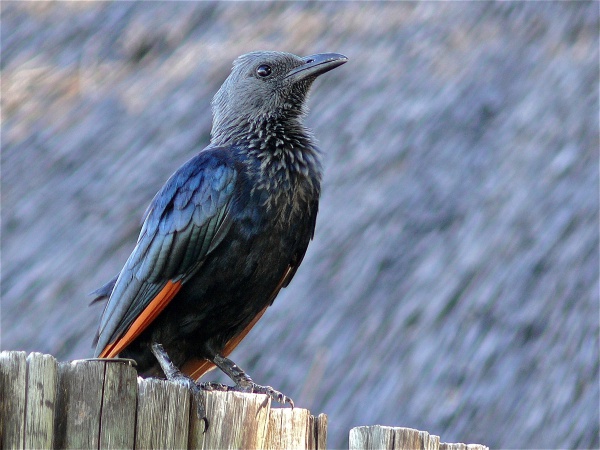Facts About Red-winged starling
The red-winged starling, a captivating member of the starling family (Sturnidae), originates from eastern Africa, spanning from Ethiopia down to South Africa. This bird is notably adaptable, often found nesting in cliffs and mountainous regions, but it has also acclimated to urban areas that mimic its natural habitats.
First described by French zoologist Mathurin Jacques Brisson in 1760, the red-winged starling was later classified as Turdus morio by Carl Linnaeus in 1766. Today, it is classified under the genus Onychognathus.
There are two subspecies of the red-winged starling: O. m. rueppellii and O. m. morio, each inhabiting different regions of Africa. The male is particularly striking with its iridescent black plumage and chestnut-colored flight feathers, while the female is distinguished by an ash-grey head. One of the easiest ways to identify these birds is by their signature whistled calls, especially the contact call that sounds like "cher-leeeoo."
These birds are incredibly versatile in their choice of habitats, thriving in forests, savannahs, wetlands, and even urban environments. As omnivores, they boast a varied diet that includes seeds, berries, nectar, invertebrates, and occasionally carrion and human leftovers. During the breeding season, they become highly territorial and aggressive. Nests are typically constructed on rocky cliffs, with the female responsible for incubating the eggs.
Despite facing predators such as falcons, eagles, owls, crows, and the gymnogene, red-winged starlings are not considered endangered. However, they can be somewhat problematic in certain areas, particularly because they can damage orchards and exhibit aggressive behavior towards anyone nearing their nests.

 South Africa
South Africa